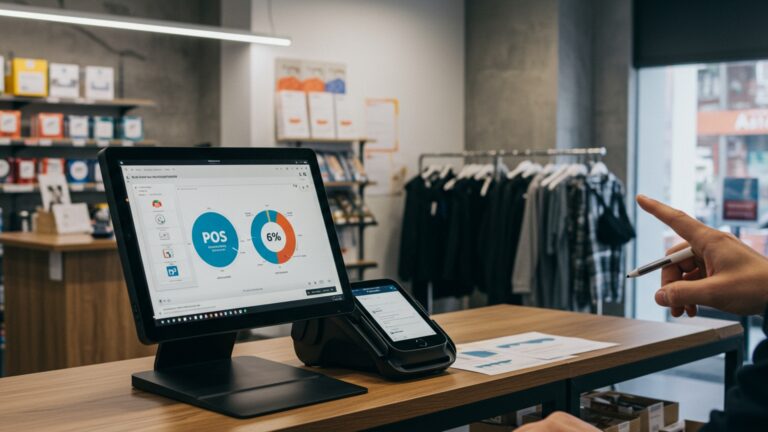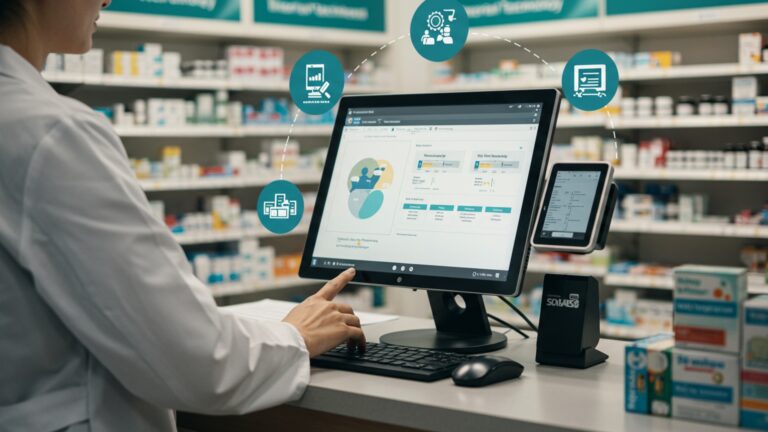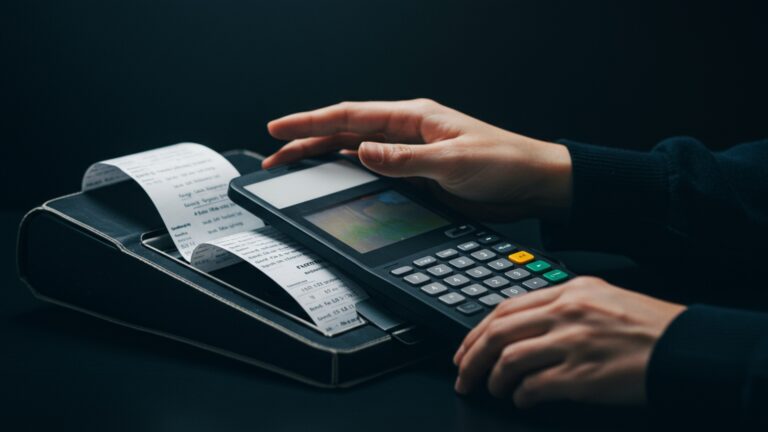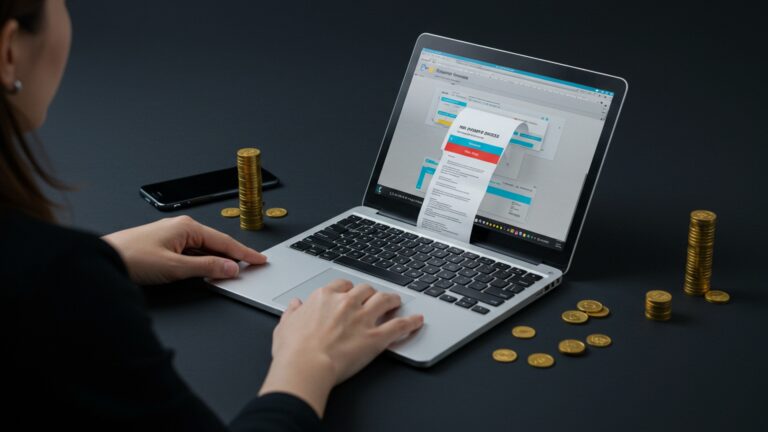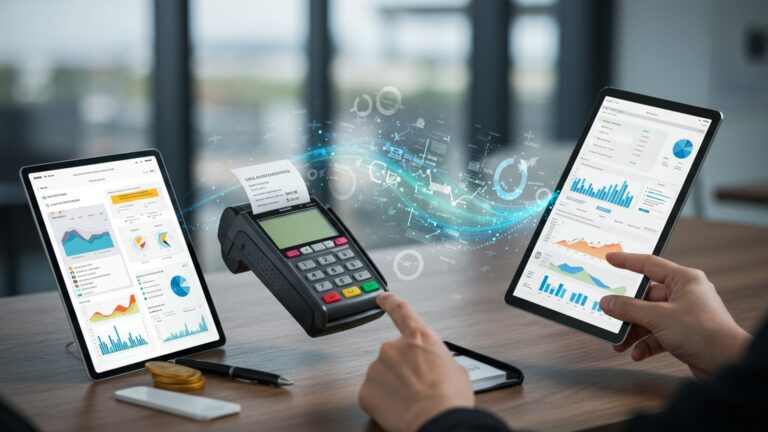Master Billing and POS Software Integration for Enhanced Business Efficiency
In today’s hyper-competitive digital landscape, businesses demand more than isolated transaction processing; they require a unified operational ecosystem. Disconnected billing and POS software systems often result in data silos, manual reconciliation errors. delayed insights, hindering agility and customer satisfaction. The recent surge in cloud-native platforms and AI-powered analytics underscores the critical need for seamless integration, transforming raw sales data into actionable intelligence. By strategically merging these core systems, companies unlock real-time inventory synchronization, accelerated payment processing. comprehensive sales reporting, moving beyond basic operational tasks to predictive forecasting and personalized customer engagement. Mastering this integration directly translates into streamlined workflows and a significant competitive advantage.
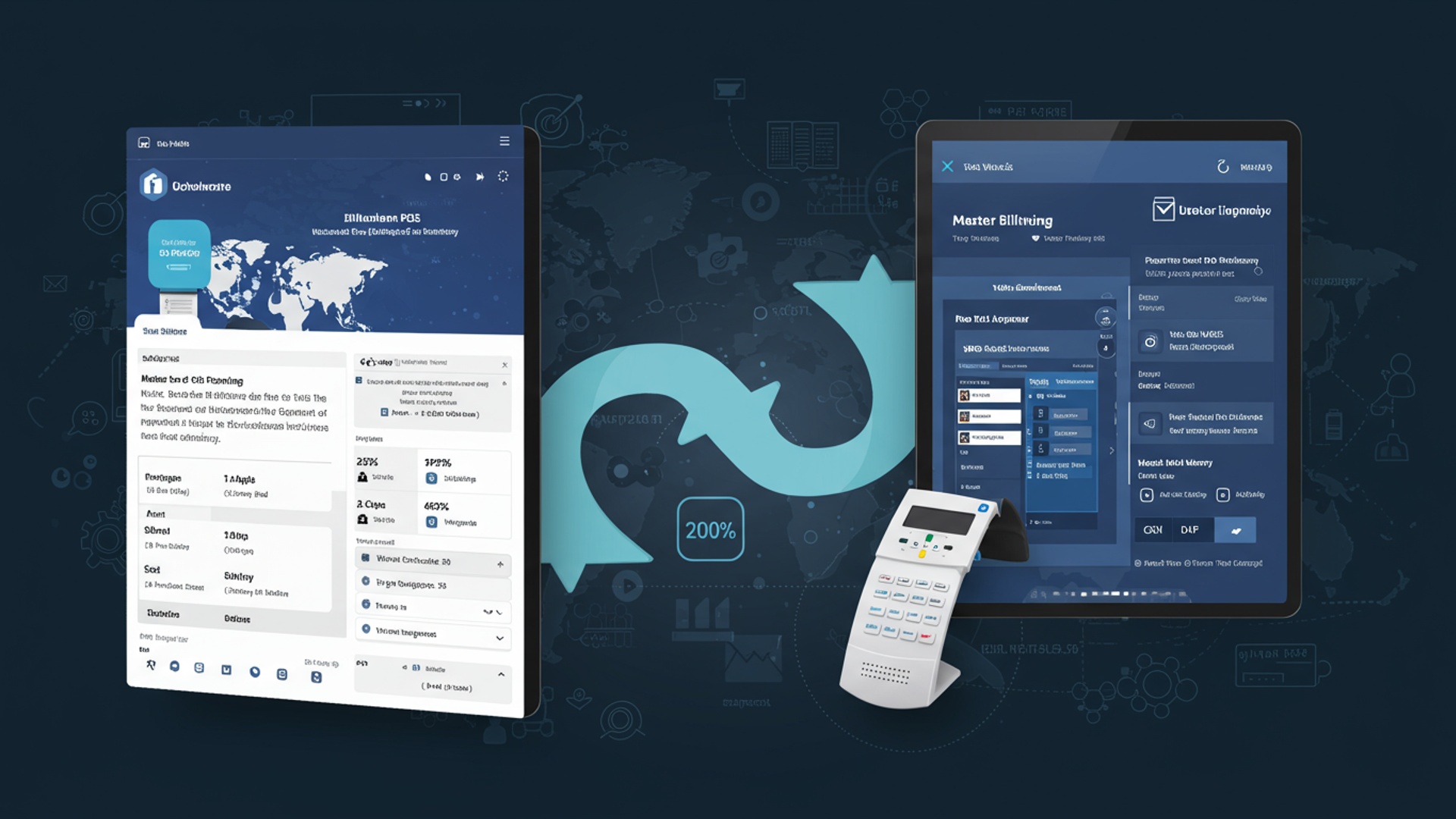
Understanding Billing and POS Software: The Core Components
Billing and Point of Sale (POS) software are two fundamental pillars of modern business operations, particularly for businesses that deal directly with customers and manage inventory. While often discussed together, it’s crucial to interpret their individual roles before exploring their powerful synergy through integration.
- Billing Software: At its heart, billing software is designed to manage and automate the process of invoicing customers for goods or services rendered. This encompasses creating, sending. tracking invoices, managing payment records, handling credit notes. often integrating with accounting systems. Its primary function is to ensure accurate financial records of sales and receivables, facilitating timely payments and providing a clear overview of a business’s financial health. For instance, a small consulting firm might use billing software to generate monthly invoices for their services, track payment due dates. send reminders to clients.
- POS Software: Point of Sale software, on the other hand, is the system used to complete customer transactions in a retail environment or any direct sales scenario. It’s where the actual sale happens. This typically involves scanning products, calculating totals, processing various payment methods (cash, card, mobile payments), issuing receipts. often managing returns or exchanges. Modern POS systems go beyond mere transaction processing; they often include features like inventory lookup, customer loyalty program management. basic sales reporting. Think of a bustling coffee shop: the POS system is what the barista uses to ring up your latte, accept your payment. print your receipt.
Individually, both billing and pos software are indispensable. Billing ensures you get paid and maintain financial order, while POS facilitates the actual sales interactions and customer experience. But, their true potential for driving efficiency and growth emerges when these two powerful systems are seamlessly integrated.
The Strategic Advantage of Integrating Billing and POS Software
Many businesses, especially smaller ones, initially operate with separate systems for billing and point-of-sale activities. A retail store might use a basic cash register or a standalone POS for daily sales, then manually input sales data into a separate accounting or billing system or week. This disconnected approach, while seemingly manageable at first, quickly introduces a myriad of inefficiencies and potential pitfalls.
The core problem with fragmented systems lies in data silos and manual data transfer. Each system holds its own set of insights. bridging the gap requires human intervention, which is prone to errors, time-consuming. delays critical business insights. Imagine a scenario where a customer returns an item purchased last week. Without integration, the POS system records the return. the inventory count might not update in real-time, nor might the corresponding financial record in the billing system. This can lead to discrepancies, stock inaccuracies. reconciliation nightmares.
Integrating billing and pos software means creating a unified ecosystem where data flows freely and automatically between these critical functions. This unification is not merely about convenience; it’s a strategic move that transforms operational workflows, enhances decision-making. significantly improves the customer experience. By connecting the front-end sales process with the back-end financial management, businesses gain a holistic view of their operations, empowering them to react faster and smarter to market demands and internal challenges. This synergistic approach is rapidly becoming a standard for businesses aiming for sustained growth and operational excellence.
Unlocking Enhanced Business Efficiency: Key Benefits of Integration
The decision to integrate billing and pos software is a transformative one, offering a cascade of benefits that directly contribute to a business’s bottom line and operational prowess.
- Streamlined Operations: Integration eliminates redundant data entry. When a sale occurs through the POS, the integrated system automatically updates inventory levels, generates a corresponding invoice or sales record in the billing system. can even trigger accounting entries. This automation reduces manual effort, speeds up processes. allows staff to focus on more value-added tasks. For example, a restaurant with integrated billing and pos software can automatically send kitchen orders, process payments. update its daily sales reports without any manual intervention between these steps.
- Improved Data Accuracy: Manual data transfer is a primary source of errors. A typo during invoice creation or an oversight in updating stock levels can lead to financial inaccuracies, inventory discrepancies. frustrated customers. An integrated billing and pos software solution ensures that data is entered once and propagated across all relevant modules, drastically reducing the chances of human error and maintaining a single, consistent source of truth.
- Enhanced Customer Experience: Faster checkout times are a direct result of efficient POS operations. With integrated systems, customer loyalty points can be instantly applied, gift cards processed smoothly. sales history readily accessible for personalized recommendations. This creates a seamless, professional. satisfying experience for the customer. Imagine a retail store where loyalty points earned in a previous purchase are automatically recognized and applied during checkout, thanks to the integrated billing and pos software.
- Better Financial Reporting and Analytics: With all sales, payment. inventory data residing in a unified system, businesses can generate comprehensive, real-time reports. This provides invaluable insights into sales trends, popular products, peak selling times, customer purchasing patterns. overall profitability. Accurate data empowers better strategic decisions, from inventory procurement to marketing campaigns. A boutique owner can easily identify which clothing lines are moving fastest and which are stagnant, guiding future purchasing decisions.
- Increased Efficiency and Time Savings: Automation frees up significant time previously spent on administrative tasks. Staff can dedicate more energy to sales, customer service, or other growth-oriented activities. This translates into higher productivity across the board.
- Reduced Costs: While there’s an initial investment in integration, the long-term cost savings are substantial. These include reduced labor costs associated with manual data entry, minimized losses due to inventory discrepancies. fewer errors requiring costly corrections. Optimized inventory management alone can significantly cut carrying costs.
- Real-time Inventory Management: This is a game-changer for businesses dealing with physical products. Every sale or return processed through the POS instantly updates inventory counts in the billing system. This provides an accurate, up-to-the-minute view of stock levels, preventing overselling, identifying popular items for reordering. reducing dead stock. This capability is particularly critical for businesses with multiple locations, where centralized inventory visibility is paramount.
The Mechanics of Integration: How Billing and POS Software Connect
Understanding how billing and pos software actually integrate is key to appreciating its power. At a fundamental level, integration involves creating a seamless flow of data between two or more distinct software applications. This is typically achieved through Application Programming Interfaces (APIs) or direct database connections.
- APIs (Application Programming Interfaces): Most modern software solutions, including robust billing and pos software, offer APIs. Think of an API as a set of rules and protocols that allows different software applications to communicate with each other. When a transaction occurs in the POS system, its API can send specific data (e. g. , item sold, quantity, price, customer details, payment method) to the billing system’s API. The billing system then interprets this data to update inventory, create a sales invoice, or record a payment. This method is highly flexible and secure, as it only exposes specific functionalities and data points.
- Direct Database Connections: In some cases, especially with custom-built or older systems, integration might involve direct access to the database of one or both applications. While this can be effective, it requires careful management to avoid data corruption and security vulnerabilities.
- Third-Party Connectors/Middleware: For solutions that don’t natively integrate or for complex multi-system environments, businesses might employ third-party integration platforms or middleware. These tools act as a bridge, translating data formats and orchestrating the flow of data between disparate billing and pos software.
The typical data flow in an integrated environment looks something like this:
1. Customer Purchase: An item is scanned at the POS. 2. Transaction Processing: POS system records sale details (items, price, customer). 3. Data Synchronization: POS sends sale data via API to the billing system. 4. Inventory Update: Billing system (or integrated inventory module) instantly deducts sold items from stock. 5. Invoice/Sales Record Generation: Billing system creates a digital invoice or sales receipt, linking it to the customer. 6. Payment Recording: Payment details from the POS are recorded in the billing system. 7. Accounting Entry: The transaction details are automatically pushed to the accounting software for ledger updates.
This automated process ensures that from the moment a sale is made, all relevant business functions are updated in real-time, providing a cohesive and accurate view of operations.
Selecting the Right Billing and POS Software for Seamless Integration
The success of your integration heavily depends on choosing the right billing and pos software solutions. This is not a one-size-fits-all decision; it requires careful consideration of your specific business needs, industry. future growth plans.
| Factor | Description and Importance |
|---|---|
| Scalability | Will the software grow with your business? Choose solutions that can handle increased transaction volumes, more product lines. additional locations without requiring a complete overhaul. |
| Features & Functionality | Evaluate if the billing and pos software offers all the features critical to your operations (e. g. , advanced inventory tracking, customer loyalty programs, multi-currency support, detailed reporting). Prioritize features that address your most pressing pain points. |
| Industry-Specific Needs | Some industries have unique requirements. A restaurant needs table management and kitchen display system integration, while a retail store might need robust barcode scanning and variant management. Look for specialized billing and pos software if your industry has distinct needs. |
| Integration Capabilities | This is paramount. Does the billing and pos software offer native integration options, robust APIs, or readily available connectors for other essential tools (e. g. , e-commerce platforms, CRM, accounting software)? Verify the ease and reliability of these integrations. |
| Vendor Reputation & Support | Research the vendor’s track record, customer reviews. the quality of their technical support. Reliable support is crucial, especially during initial setup and for ongoing maintenance. |
| Cost & ROI | Consider not just the initial purchase price but also subscription fees, implementation costs, training. potential hidden charges. Calculate the potential return on investment (ROI) by factoring in efficiency gains and error reduction. |
| Security Features | Ensure the billing and pos software complies with industry standards for data security (e. g. , PCI DSS for payment processing) and offers robust features like data encryption and user access controls to protect sensitive customer and financial insights. |
| User-Friendliness | An intuitive interface reduces training time and increases staff adoption. Test the software with your team if possible. |
A practical approach would be to create a detailed list of your current operational challenges and desired functionalities. Then, explore leading billing and pos software providers, request demos. specifically inquire about their integration ecosystems. Don’t hesitate to ask for references from businesses similar to yours that have successfully integrated their systems.
Real-World Impact: Use Cases of Integrated Billing and POS Software
The theoretical benefits of integrating billing and pos software become vividly clear when examining real-world applications across various business sectors.
- Retail Stores (e. g. , Fashion Boutiques, Electronics Shops):
A fashion boutique uses an integrated system where every sale at the counter instantly updates its inventory count. When a customer purchases a dress, the POS records the sale, deducts the specific size and color from stock. generates a digital invoice that links to the customer’s loyalty profile. This prevents overselling, informs timely reordering. allows the boutique to examine which styles and sizes are most popular, directly influencing future purchasing decisions. If the boutique also has an online store, the integrated billing and pos software ensures that online and in-store inventory levels are always synchronized, eliminating stock discrepancies between channels.
- Restaurants and Cafes:
In a bustling cafe, an integrated billing and pos software system is essential. When a customer orders a coffee and a pastry, the POS system simultaneously sends the order to the barista’s station and the kitchen, processes the payment (even split payments). records the sale. This transaction automatically updates raw ingredient inventory (e. g. , coffee beans, milk, flour) and feeds into the daily sales report. This integration streamlines order fulfillment, reduces wait times. provides accurate data for menu planning and supplier orders. Loyalty points for frequent customers are also automatically tracked and applied at checkout.
- Service-Based Businesses (e. g. , Salons, Auto Repair Shops):
An auto repair shop utilizes integrated billing and pos software to manage appointments, track services rendered. process payments. When a customer brings their car for an oil change, the POS system logs the service, pulls up the customer’s vehicle history. generates a work order. Upon completion, the billing system creates an itemized invoice, applies any discounts. processes the payment. This integration ensures accurate service records, efficient scheduling. precise billing, improving customer trust and operational transparency. Inventory of parts used is also automatically updated.
- Small Business Empowerment:
Consider “The Artisan’s Corner,” a small business selling handmade crafts. Initially, they managed sales with a basic card reader and tracked inventory in a spreadsheet. This led to frequent stockouts of popular items and hours spent at month-end reconciling sales. By adopting an integrated billing and pos software, every craft sold immediately updates their online store’s stock, generates a sales receipt. feeds into their accounting system. This has reduced administrative time by 30%, minimized stock errors. allowed the owner to focus more on creating new crafts and engaging with customers, ultimately boosting sales and customer satisfaction.
These examples underscore how integrated billing and pos software solutions are not just for large enterprises but are critical tools for businesses of all sizes to achieve efficiency, accuracy. improved customer engagement.
Navigating the Integration Journey: Challenges and Key Considerations
While the benefits of integrating billing and pos software are compelling, the process is not without its challenges. Being aware of these potential hurdles allows businesses to plan effectively and mitigate risks, ensuring a smoother transition.
- Initial Setup Complexity: The initial configuration and setup of an integrated system can be intricate. It involves mapping data fields between systems, configuring workflows. ensuring all components communicate correctly. This often requires technical expertise and can be time-consuming.
- Data Migration: Moving existing data (customer details, product catalogs, historical sales) from old systems to the new integrated billing and pos software can be a significant undertaking. Data quality issues, inconsistencies. formatting discrepancies can complicate the process, potentially leading to errors if not handled carefully.
- Staff Training and Adoption: Any new system requires staff to learn new procedures and adapt to different interfaces. Resistance to change or inadequate training can hinder the successful adoption of the integrated solution, impacting efficiency and potentially leading to user errors.
- Potential for Downtime During Transition: The migration and cutover to a new integrated system might necessitate some downtime for your operations. Businesses must plan this carefully to minimize disruption, especially during peak hours or seasons.
- Vendor Lock-in: Once you invest in a specific billing and pos software ecosystem, it can be challenging and costly to switch to another vendor later on. Ensure your chosen vendors offer flexibility and robust integration capabilities, even with third-party tools, to avoid being overly reliant on a single provider.
- Security Concerns: Integrating systems means more data points are interconnected. It’s crucial to ensure that the chosen billing and pos software vendors prioritize security, comply with relevant data protection regulations (like GDPR, PCI DSS). implement robust measures to protect sensitive customer and financial data from breaches.
- Cost Overruns: Beyond licensing fees, implementation costs, customization. ongoing maintenance can add up. It’s essential to have a clear budget and account for all potential expenses to avoid unexpected financial burdens.
Addressing these challenges proactively through thorough planning, clear communication. adequate resource allocation is crucial for a successful integration project.
Actionable Steps for a Successful Billing and POS Software Integration
Embarking on the integration of your billing and pos software can seem daunting. by following a structured approach, businesses can navigate the process effectively and maximize their return on investment.
- Assess Your Current Needs and Pain Points:
Before looking at solutions, thoroughly examine your existing workflows. What are the inefficiencies? Where are manual errors most common? What reporting capabilities are you lacking? Understanding your specific challenges will help you identify the critical features you need in an integrated billing and pos software solution. Involve key stakeholders from sales, finance. operations in this assessment.
- Research and Select Appropriate Software Solutions:
Based on your needs assessment, research billing and pos software that offers robust integration capabilities. Look for vendors with a proven track record, positive reviews. excellent customer support. Don’t shy away from requesting demos and free trials to test the user interface and core functionalities. Pay close attention to how easily they integrate with your existing accounting software or other essential tools.
- Plan the Integration Process Meticulously:
Develop a detailed project plan. This should include timelines, responsible parties, data migration strategies. a contingency plan for potential issues. Decide on the order of integration – perhaps starting with a pilot program in one department or location. Define clear success metrics for the integration.
- Conduct Thorough Testing:
Before a full rollout, rigorously test the integrated billing and pos software. Perform end-to-end transaction simulations, check inventory updates, verify invoice generation. ensure all data flows correctly between the POS and billing modules. Test edge cases, such as returns, discounts. partial payments. Involve a diverse group of users in the testing phase to catch any overlooked issues.
- Train Staff Effectively:
Comprehensive training is paramount. Provide hands-on training sessions for all staff who will be interacting with the new integrated billing and pos software. Develop training materials, quick-reference guides. offer ongoing support. Emphasize the benefits of the new system to foster adoption and minimize resistance to change.
- Monitor Performance and Optimize Post-Integration:
After going live, continuously monitor the performance of your integrated system. Track key metrics such as transaction speed, data accuracy. staff productivity. Gather feedback from users and be prepared to make adjustments or optimizations. Software is not a static solution; ongoing refinement ensures you continue to leverage its full potential. Regularly review reports generated by your integrated billing and pos software to identify areas for further efficiency gains.
Conclusion
Mastering billing and POS software integration is no longer a luxury; it’s a fundamental shift towards operational excellence. By seamlessly connecting these vital systems, businesses gain real-time visibility into inventory, sales. customer data, eliminating the manual reconciliation headaches that plague so many operations. Think of a busy cafe where integrated systems instantly update stock after each coffee sold, preventing frustrating “out of stock” surprises and ensuring faster service during peak hours. My personal tip? Don’t just implement; strategize. Before committing, conduct a thorough audit of your current workflows and identify specific pain points. Embrace the current trend of cloud-based solutions, as they offer unparalleled scalability and accessibility, empowering you to manage your business from anywhere. This proactive approach ensures you’re not merely adopting new tech. truly optimizing your business’s core functions. Embrace this integration journey; it’s a powerful step towards building a more efficient, resilient. ultimately, more profitable enterprise.
More Articles
Simplify Your Transactions How to Choose the Best POS Billing Software
Learn How to Streamline Billing and POS Software for Seamless Business Operations
How to Choose the Best Cloud Based POS Software for Your Growing Business
Your Ultimate Guide How to Select the Right POS Software for Small Businesses
Boost Your Retail Business How to Master POS Software for Seamless Management
FAQs
What exactly is ‘Master Billing and POS Software Integration’ and why should my business care?
It’s about connecting your main billing system with your Point of Sale (POS) software. This means sales from your registers instantly update your inventory, customer accounts. financial records, all in one go. You should care because it massively streamlines operations, reduces errors. gives you a clearer, real-time picture of your business performance.
How does integrating these systems actually make my business more efficient day-to-day?
Imagine no more manual data entry between systems! Sales, returns. payments are automatically recorded. This speeds up checkout, makes inventory management a breeze, simplifies accounting. frees up your staff to focus on customers instead of paperwork. Everything just flows better.
Beyond just efficiency, what are some of the key advantages businesses see from this kind of integration?
You’ll get real-time data for better decision-making, reduced operational costs due to fewer errors and less manual work, improved customer experience with faster service, better inventory control to avoid stockouts or overstocking. a much smoother financial reconciliation process or month.
Sounds great. is setting up this integration a huge headache or super complicated?
While there’s an initial setup phase, modern integration solutions are designed to be user-friendly. Many providers offer guided setup, training. ongoing support. The complexity often depends on your existing systems. the long-term benefits in terms of time and cost savings typically far outweigh the initial effort.
Which types of businesses would benefit most from integrating their billing and POS software?
Any business that handles sales transactions, manages inventory. needs to track customer data can benefit. This includes retail stores, restaurants, cafes, service businesses. even e-commerce operations that also have a physical presence. , if you sell stuff and bill customers, this is for you.
Can this integration actually save my business money in the long run?
Absolutely. By automating tasks, you reduce labor costs associated with manual data entry and reconciliation. Fewer errors mean less time spent correcting mistakes. Better inventory management reduces waste and carrying costs. Plus, real-time insights help you make smarter purchasing decisions, all contributing to significant savings over time.
My business already uses XYZ billing and ABC POS. Can this integration work with what I already have?
Often, yes! Many integration solutions are designed to be compatible with a wide range of popular billing and POS systems. It’s best to check with a potential provider about their specific compatibility list or if they offer custom integration options for your existing software. Don’t assume you need to rip and replace everything.

